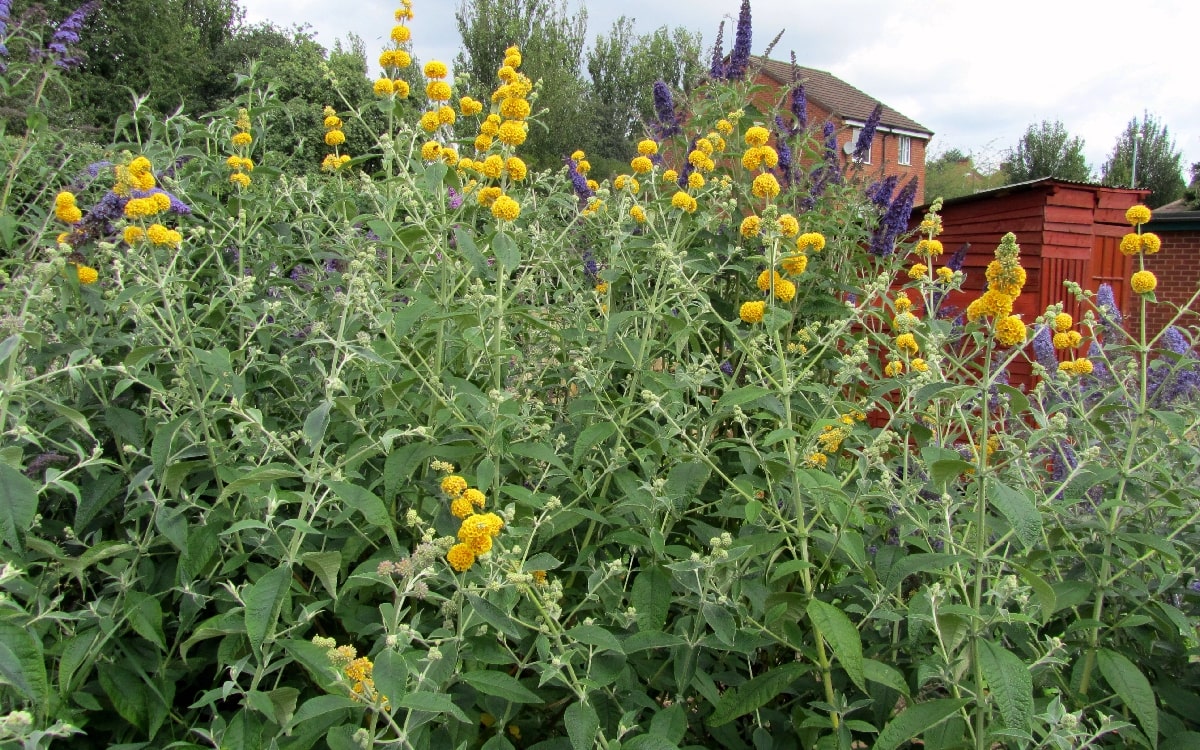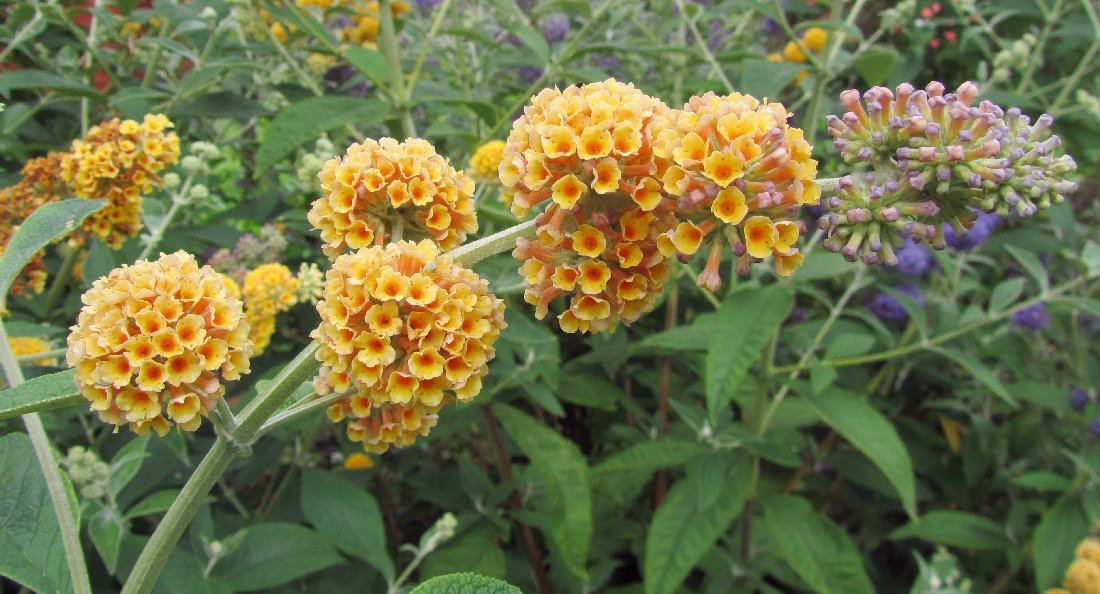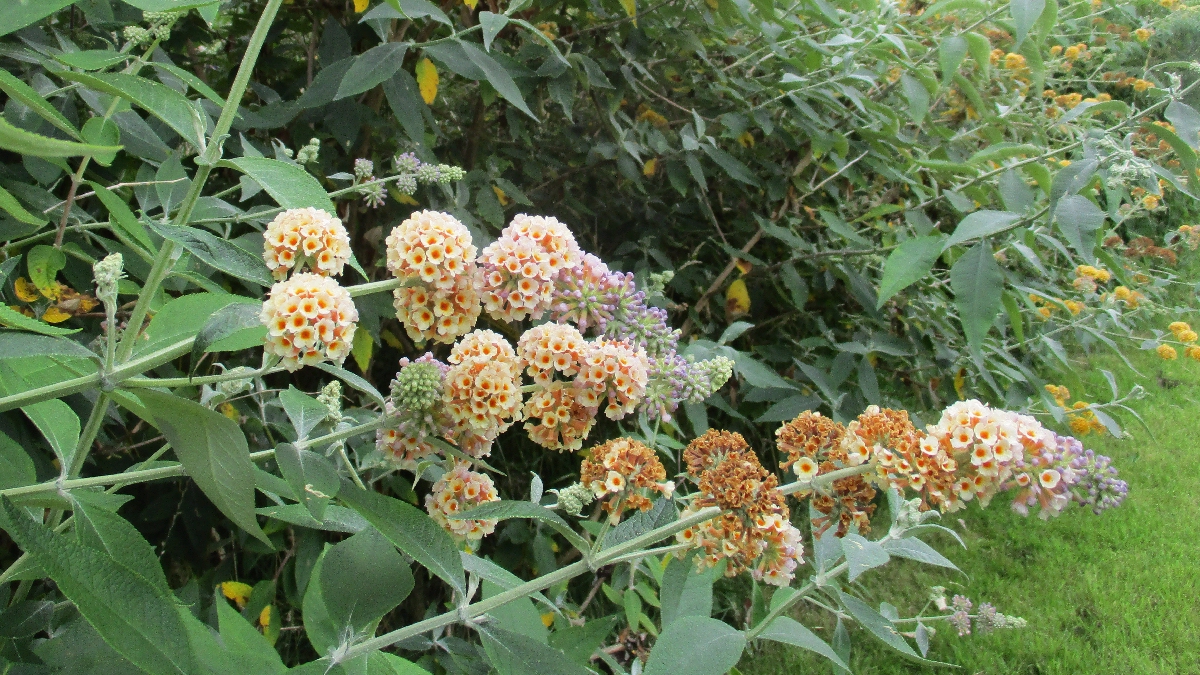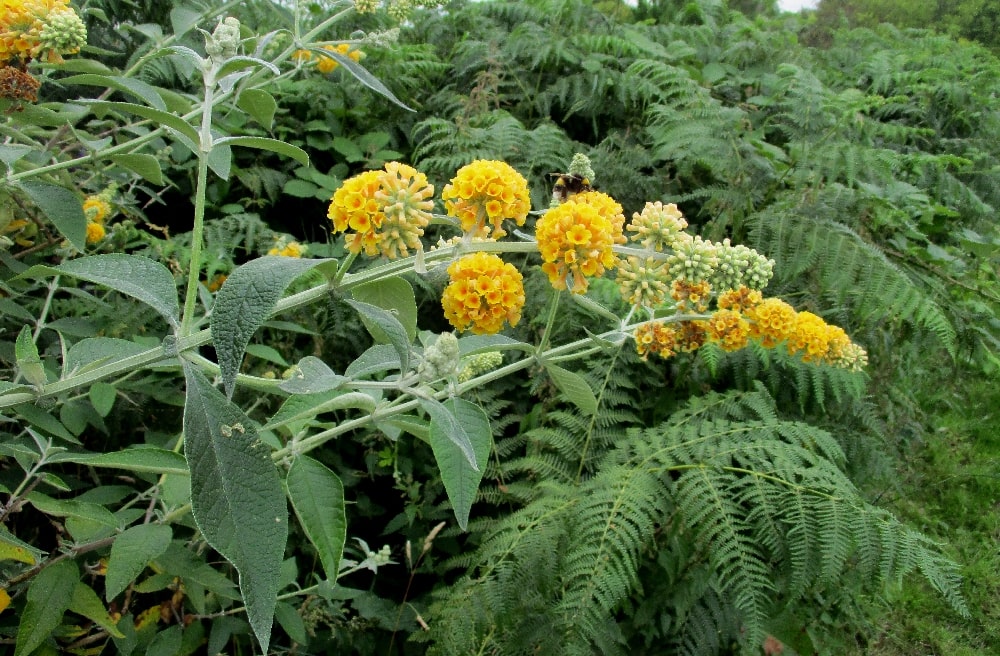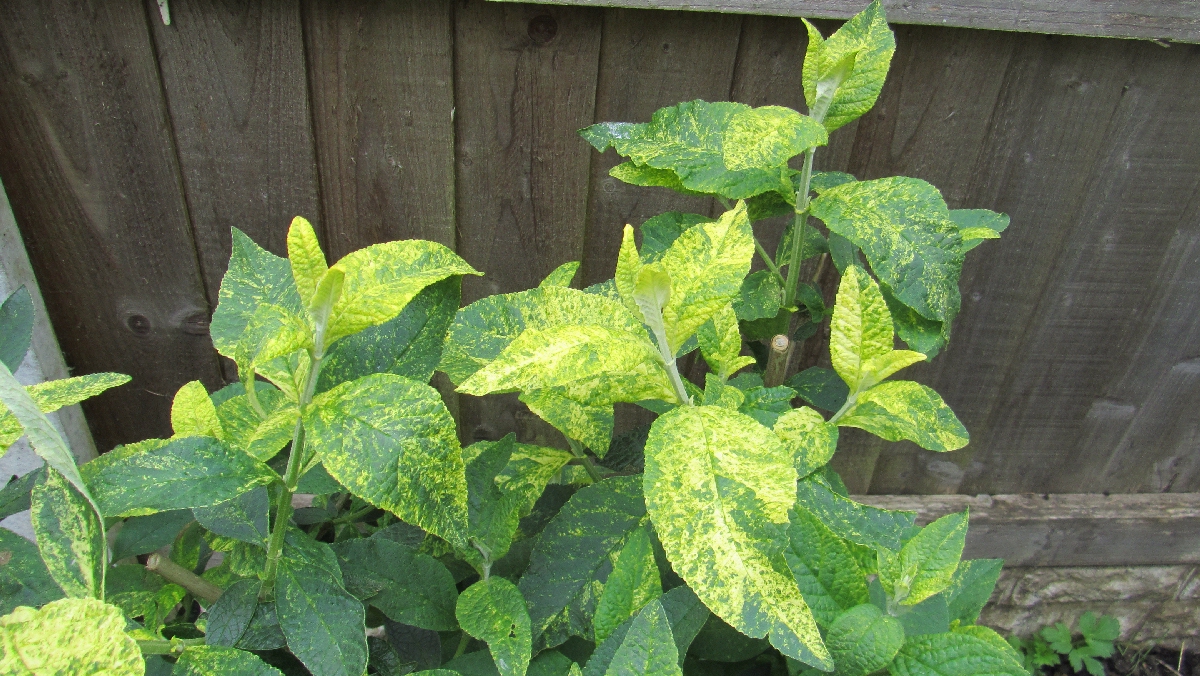Buddleja × weyeriana
Sponsor
Kindly sponsored by
The John Spedan Lewis Foundation
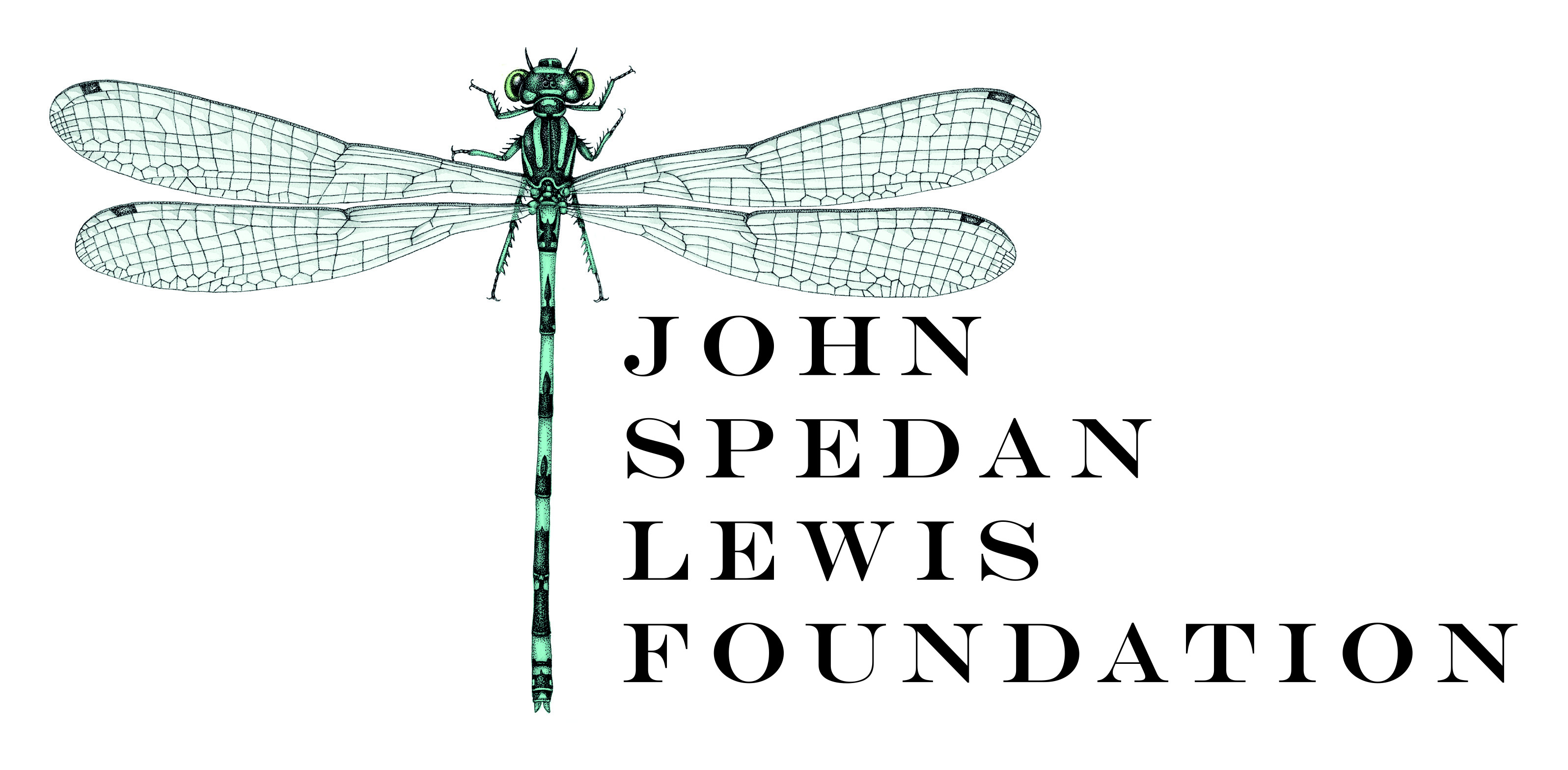
Credits
Andrew Large (2021)
Recommended citation
Large, A.T. (2021), 'Buddleja × weyeriana' from the website Trees and Shrubs Online (treesandshrubsonline.
Genus
- Buddleja
- B. davidii × B. globosa
Infraspecifics
Other taxa in genus
- Buddleja albiflora
- Buddleja alternifolia
- Buddleja araucana
- Buddleja asiatica
- Buddleja auriculata
- Buddleja caryopteridifolia
- Buddleja colvilei
- Buddleja cordata
- Buddleja crispa
- Buddleja crispa × lindleyana
- Buddleja curviflora
- Buddleja davidii
- Buddleja delavayi
- Buddleja fallowiana
- Buddleja fallowiana × davidii
- Buddleja FLUTTERBY™ Series
- Buddleja forrestii
- Buddleja globosa
- Buddleja glomerata
- Buddleja japonica
- Buddleja lindleyana
- Buddleja LO AND BEHOLD® Series
- Buddleja longiflora
- Buddleja loricata
- Buddleja × luteolufaucia
- Buddleja macrostachya
- Buddleja marrubiifolia
- Buddleja megalocephala
- Buddleja 'Miss Ruby'
- Buddleja 'Morning Mist'
- Buddleja myriantha
- Buddleja New Dwarf Hybrids
- Buddleja nivea
- Buddleja officinalis
- Buddleja 'Orange Sceptre'
- Buddleja paniculata
- Buddleja × pikei
- Buddleja 'Pink Delight'
- Buddleja saligna
- Buddleja 'Salmon Spheres'
- Buddleja salviifolia
- Buddleja 'Silver Frost'
- Buddleja speciosissima
- Buddleja 'Summer Beauty'
- Buddleja virgata
- Buddleja × wardii
- Buddleja × weyeriana Hybrids
- Buddleja 'Winter Sun'
Large multi-branched shrub. F2 hybrid of Buddleja globosa and Buddleja davidii, mostly resembling B. davidii in foliage and form. Inflorescences are intermediate, thyrsoid in form, and consisting of three to nine loose globose heads of 20–40 flowers; corolla yellow or cream, often with a lilac flush on opening; throat deeper orange. Individual flowers resemble B. davidii in all but corolla colour, except the stamens are much reduced, brown and without apparent pollen. Seeds 0.75 × 0.5 mm, narrowly winged all round. (Pers. obs.).
USDA Hardiness Zone 6-9
RHS Hardiness Rating H5
Buddleja × weyeriana represents a group of large hybrid shrubs, notable for their yellow- or cream-coloured flowers. Their garden-origin is well documented: Major William van de Weyer of Smedmore House at Corfe Castle, Dorset, UK, used pollen from B.davidii var. magnifica (sic.) to pollinate the South American species B. globosa whilst home from leave during the First World War. The F1 generation was disappointing, displaying only poor colour flowers and an inferior form. He went on to successfully cross two of these plants, collecting seed to grow a F2 generation. The F2 plants were more pleasing, vigorous shrubs with lilac-flushed yellow or cream flowers; the first to be exhibited was the yellow ‘Golden Glow’ (van de Weyer 1920), followed soon after by ‘Moonlight’.
The popular ‘Sungold’ is a sport of ‘Golden Glow’ selected in the Netherlands in the 1960s (Stuart 2006); ‘Variegata’ is in turn a sport of ‘Sungold’ of uncertain origin. Many other names are listed, but these are frequently spurious synonyms for the four aforementioned cultivars. A number of these were sent to Longstock Nursery for evaluation, and all proved to be identical or near-identical to either ‘Golden Glow’, ‘Moonlight’ or ‘Sungold’ (P. Moore, pers. comm.). Extant plants are no longer to be found for some names, and so must be assumed to also be spurious designations. There are no reports of the F2 cross of van de Weyer being repeated, although at least one attempt has been made to develop a F1 generation, with results differing from those report by van de Weyer (van Laere, van Huylenbroeck & van Bockstaele 2011).
B. × weyeriana cultivars are fertile, producing copious seed in the presence of compatible pollinating plants, however, the flowers do not appear to produce viable pollen. A number of back-crossed hybrids have been derived from ‘Sungold’ by pollination with established B. davidii cultivars. Their form is generally more like B. davidii than B. globosa or even B. × weyeriana; although back-crosses technically retain the nothospecific epithet, in this case we have chosen to discuss these separately in the article B. × weyeriana Hybrids.
'Golden Glow'
Synonyms / alternative names
Buddleja × weyeriana 'Golden Globe'
Buddleja × weyeriana 'Orange Glow'
‘Golden Glow’ was the first cultivar of B. × weyeriana exhibited and published by van de Weyer in 1920 (van de Weyer 1920). It is a large, multibranched shrub with dark green leaves. The flowers are a deep yellow with a lilac flush persisting from the mauve-tinged buds; consequently the flowers are not as bright as ‘Sungold’, and the colour is rather muddy in comparison.
'Honeycomb'
‘Honeycomb’ is a name attached to what was considered a superior clone of ‘Sungold’ found at Crathes Castle, Scotland, UK and taken to the USA by Mike Dirr (Stuart 2006). Although it is debatable whether ‘Honeycomb’ displays any substantial difference to ‘Sungold’ (pers. obs.) we include it here as ‘Honeycomb’ is cited in the ancestry of several important, modern cultivars such as B. ‘Miss Ruby’.
'Moonlight'
Synonyms / alternative names
Buddleja × weyeriana 'Hocus Pocus'
Buddleja × weyeriana 'Beech Park'
Buddleja × weyeriana 'Liberty'
‘Moonlight’ was introduced by van de Weyer some time in the 1920s, shortly after ‘Golden Glow’ which is presumably a full sibling. It is a vigorous shrub and has large, slightly glaucous leaves with a compressed tomentum on their lower surface. The inflorescences are in three to nine loose balls arranged in a thyrse. The buds are lilac-mauve and open a soft-cream shade with a persisting lilac-flush (Stuart 2006). In some plants the corollas appear more buff-coloured than cream (pers. obs.); it is not clear whether or not these represent a unique cultivar.
'Sungold'
‘Sungold’ arose as a sport of ‘Golden Glow’ at the nursery of P.G. Zwijnenburg, the Netherlands, and was introduced to the trade in 1966 (Clarke 1988; Hatch 2018–2020). ‘Sungold’ is slightly more vigorous than ‘Golden Glow’ and produces inflorescences of the same shape, however, the buds are pale yellow or only very slightly lilac-tinged and the corolla is a very clear, bright yellow without any lilac-mauve flush. A significant improvement on the previous cultivar, with a unique colour and excellent garden performance, ‘Sungold’ was awarded the RHS AGM.
'Variegata'
Synonyms / alternative names
Buddleja × weyeriana 'Flight's Fancy'
A sport of ‘Sungold’ with the same yellow flowers, the leaves are randomly speckled with yellow, with some young leaves almost completely yellow. The level of variegation is extremely variable and the shrub is prone to reversion. A variegated B. × weyeriana, presumably the same cultivar, was marketed by Webbs of Wychbold (Worcestershire, UK), listed in the 2003 RHS Plant Finder as ‘Flight’s Fancy’ (Hatch 2018–2020). It is now rare in cultivation.

